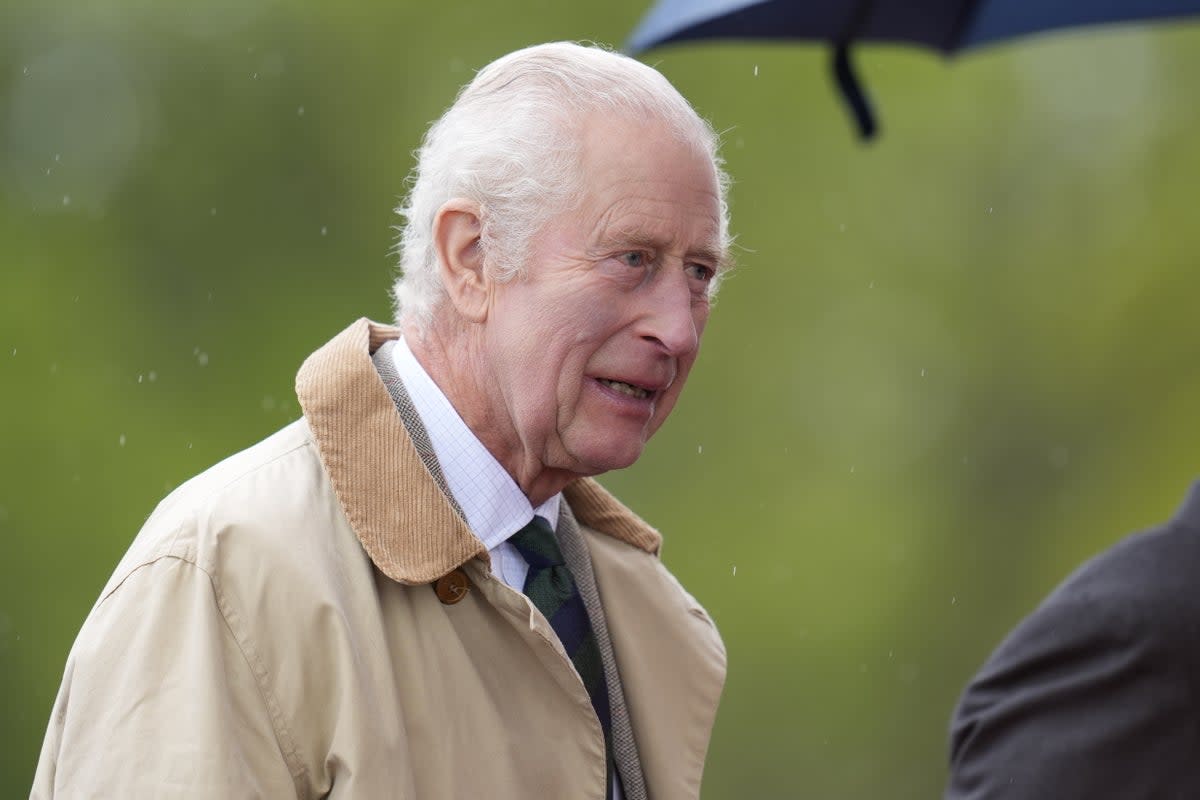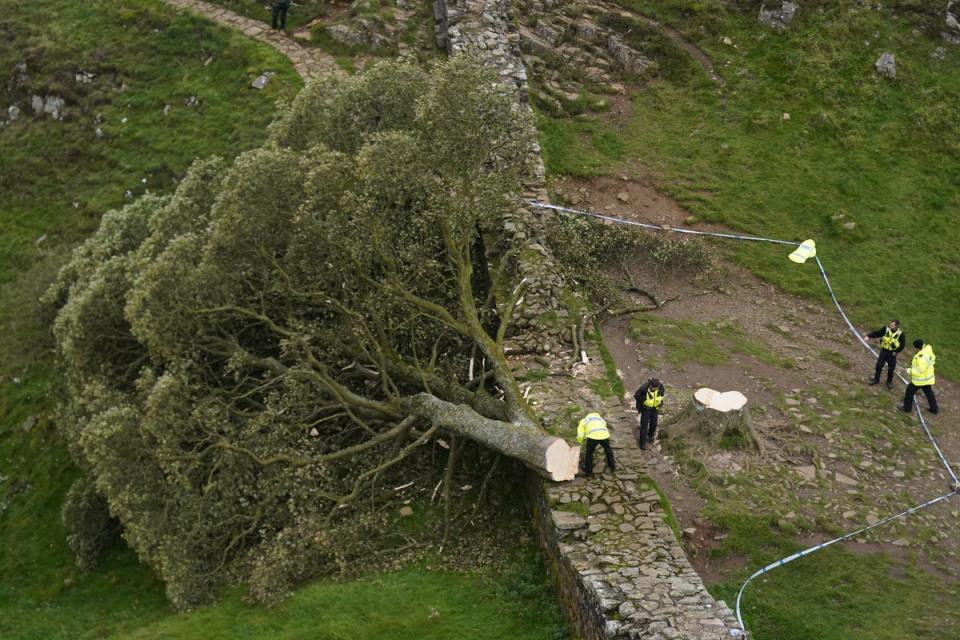King to plant sapling from felled Sycamore Gap tree in Windsor Great Park

King Charles is set to have a sapling from the Sycamore Gap Tree planted in a royal park, eight months after the iconic tree was felled.
On Monday, the monarch was presented with the first seedling grown from seeds collected from the tree - which stood next to Hadrian’s Wall in Northumberland for 200 years - when it was cut down in September.
Once the seedling has matured into a sapling, Charles will have it planted in Windsor Great Park for visitors to enjoy as a symbol of the hope and beauty that can come from loss, the National Trust said.
There was an outcry when the tree was felled last year in an act of vandalism, with Northumberland National Park saying it had received 2,000 “heartfelt” messages from people from all around the world expressing sorrow.
Historic England said Hadrian’s Wall had also suffered damage during the felling.

A collection of small seedlings and buds from the 50ft tree propagated at the National Trust’s plant conservation centre in Devon, which has so far bred more than 100 seedlings and more than 40 cuttings.
The seedling will continue to be cared for by expert horticulturists until it is ready for planting.

In a social media post, Buckingham Palace said: “Part of the power of trees to move and console us lies in the continuity and hope they represent: the sense that, rooted in the past and flourishing in the present, their seeds will be carried into an as yet unimaginable future.”
May 27 is Celebration Day, a national day dedicated to remembering and celebrating people who are no longer with us and have shaped us to be where we are today, the National Trust said.
Charles, a long-time environmentalist, is patron to the National Trust and was its president from 2003 until his ascension to the throne in 2022.
The Sycamore Gap tree was among the UK’s most photographed trees and was made famous in a scene in Kevin Costner’s 1991 film Robin Hood: Prince Of Thieves.
The National Trust said planting plans for the other surviving seedlings will be announced later this year, including in Northumberland.
It is hoped the trees these seedlings grow into, including the one received by Charles, will distribute their own seeds widely through the wind.

Hilary McGrady, director general of the National Trust, said: “It is wonderful news that His Majesty will one day have the very first sapling grown from this iconic tree.
“The new tree will be seen by many thousands each year and will be the first of many Sycamore Gap saplings planted at different places, in Northumberland and beyond.
“The swell of emotion we saw after the sycamore was felled goes to show how personally connected we all are to our natural heritage.
“These new green shoots are keeping the story of the Sycamore Gap alive and are serving as a reminder of the simple and much-needed hope, joy and respite that nature can bring.”
The public got its first glimpse of the seedling at the Chelsea Flower Show on May 20 when Dame Judi Dench placed it in the Octavia Hill garden – named after the charity’s founder.
Andy Jasper, director of gardens and parklands at the National Trust, said: “It was quite overwhelming and incredibly humbling to see the public’s reaction to the very first seedling to successfully germinate and grow at our special plant conservation centre, on display at the Chelsea Flower Show last week.
“Personally, it gave me so much joy to tell its story to the thousands of visitors to the stand – and to witness and to feel the outpouring of emotions first-hand of what this tiny sapling means to so many across the country.”


